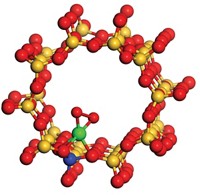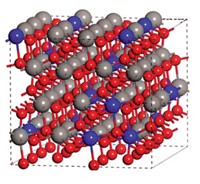Advertisement
Grab your lab coat. Let's get started
Welcome!
Welcome!
Create an account below to get 6 C&EN articles per month, receive newsletters and more - all free.
It seems this is your first time logging in online. Please enter the following information to continue.
As an ACS member you automatically get access to this site. All we need is few more details to create your reading experience.
Not you? Sign in with a different account.
Not you? Sign in with a different account.
ERROR 1
ERROR 1
ERROR 2
ERROR 2
ERROR 2
ERROR 2
ERROR 2
Password and Confirm password must match.
If you have an ACS member number, please enter it here so we can link this account to your membership. (optional)
ERROR 2
ACS values your privacy. By submitting your information, you are gaining access to C&EN and subscribing to our weekly newsletter. We use the information you provide to make your reading experience better, and we will never sell your data to third party members.
Synthesis
Watching palladium directly synthesize hydrogen peroxide
Spectroscopy insights could lead to an inexpensive route to an industrial oxidizer
by Mitch Jacoby
March 5, 2018
| A version of this story appeared in
Volume 96, Issue 10

By scrutinizing a nanoparticle catalyst while it converts hydrogen and oxygen to hydrogen peroxide, researchers have uncovered new information about the mechanism that drives the process, providing insights that could lead to the design of industrial catalysts capable of making the peroxide inexpensively (ACS Catal. 2018, DOI: 10.1021/acscatal.7b03514).
H2O2 is used commercially for bleaching and as a disinfectant and oxidizer. Worldwide production is projected to exceed 5.5 million tons by 2022, according to Global Industry Analysts. Manufacturers prepare the peroxide from anthraquinone via an energy-intensive, multistep process. Synthesizing the compound directly from hydrogen and oxygen gases could require less energy, but the route is difficult because water is the thermodynamically favored product.
Various research groups have come up with nanoparticle-based catalytic and electrocatalytic direct-synthesis methods, but in general, those methods suffer from problems with catalyst stability and product selectivity.
Nanoparticle catalysts often undergo structural changes inside reactors, forming active sites on the fly. Identifying those changes can lead to useful insights for tweaking catalyst design, but making such observations is notoriously difficult.
Scientists at the Karlsruhe Institute of Technology set out to find a way to watch a palladium catalyst make H2O2. Led by Manuel Selinsek and Dmitry E. Doronkin, the researchers designed a reactor cell that enabled them to use X-ray absorption spectroscopy to monitor a nanoparticle catalyst—palladium on titanium dioxide—as it mediated reactions. They filled the room-temperature cell with water and pressurized it to 9.8 atm with hydrogen and oxygen at various ratios.
They found that even before pressurizing the cell, residual oxygen dissolved in water adsorbed on the metal particle surfaces. As they raised the pressure, the gases formed hydrogen peroxide, but only when the H2-to-O2 ratio was between 0.5 and 2.0. X-ray analysis showed that at those ratios, hydrogen converted metallic palladium to α-palladium hydride, a catalytically active form in which hydrogen burrows into the palladium lattice. H2O2 formed when lattice hydrogens reacted with surface oxygens.
Raising the H2-to-O2 ratio above 2.0 converted α-palladium hydride to the β form of the hydride. Under those conditions, the system formed water, likely due to overhydrogenation of the peroxide.
“This is a very interesting study as it probes the nature of a palladium catalyst under operating conditions and clearly shows the potential role of various palladium hydrides in this challenging reaction,” says Graham J. Hutchings, a catalysis specialist at Cardiff University.
“The experimental setup is ingenious, but I doubt this could be scaled up,” Hutchings says. Even so, he remarks that “the study will inspire others to study this reaction under actual operating conditions.”





Join the conversation
Contact the reporter
Submit a Letter to the Editor for publication
Engage with us on Twitter